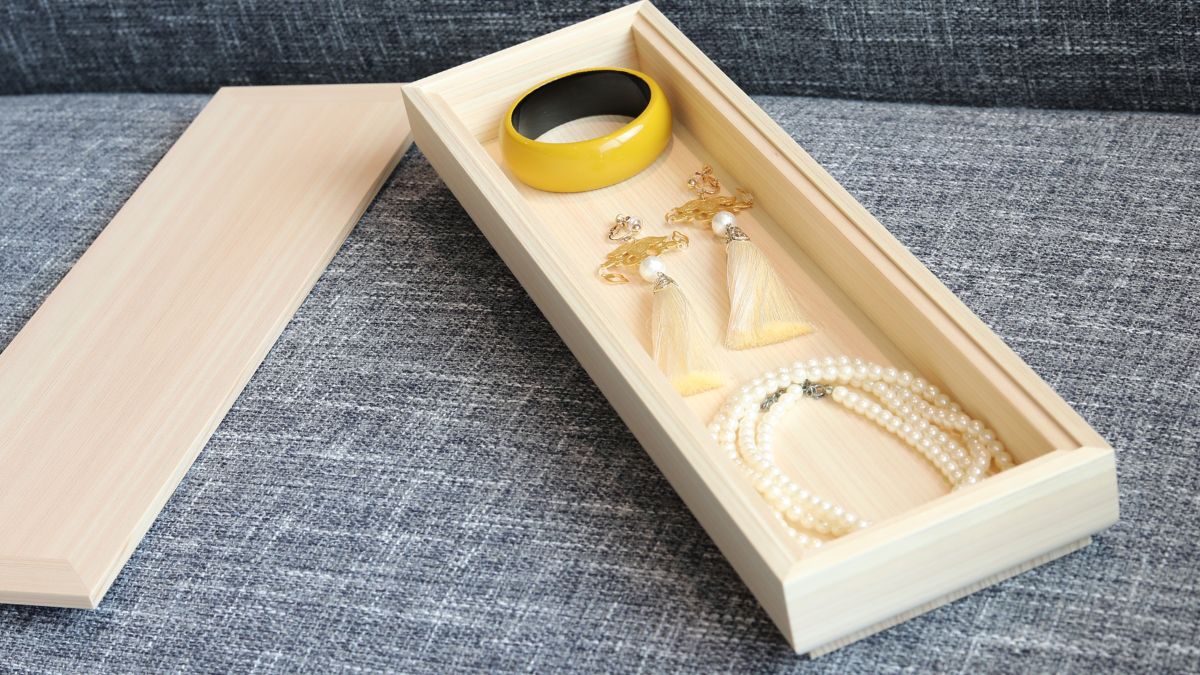
Brand
Traditional techniques of craftsmanship for beautiful buddhist altarware
IWATA HOURAIYA
- 1924
- KYO BUTSUDAN, KYO BUTSUGU
- Hirotaka Iwata

History
KYO butsudan and KYO butsugu born in the capital of Japanese Buddhist culture
Iwata Horaiya is a maker of Kyo-butsudan (Buddhist altars) and Kyo-butsugu (Buddhist ritual utensils) founded in Kyoto in 1978.
Full-scale production of butsugu in Kyoto began in the Heian period (794-1185) with the appearance of a butsugu craftsman who set up his workshop in Shichijo, Kyoto.
In the Edo period (1603-1867), the installation of buddhist altars in homes became widespread due to the "Shomon-aratame" system, which was implemented in conjunction with the prohibition of Christianity.
Since then, butsudan and butsugu have taken root in people's lives and customs, and have developed greatly.
KYO butsudan and KYO butsugu are produced under a division of labor system, and the manufacturing process is very diverse.
Each craftsman combines his strength while improving his skills to create KYO butsudan and KYO butsugu as a comprehensive craft.
In 1976, they were designated as traditional crafts by the Minister of Economy, Trade and Industr
Characteristic
New products with elaborate handwork
70% of KYO butsudan and KYO butsugu altars are made for temples, and their high level of craftsmanship is highly regarded not only in Japan but also overseas.
The main characteristics of our products are the intricacy of the construction, as if they were reproduced directly from the architecture of temples of various religious sects, and the solemn beauty of each division of labor, such as woodworking, lacquering, gilding, roiro, maki-e, coloring, kazari metal fittings, wood carving, and general assembly, which are all done by hand.
Kyo-butsudan and Kyo-butsugu made with the finest materials and traditional techniques are so exquisite that they are recognized as works of art.
And only those products that have undergone an examination by the Butsugu Association and are accompanied by a national certificate of traditional craftsmanship are recognized as Kyo-butsudan and Kyo-butsugu.
We wanted to preserve the traditional craft techniques by creating products that can be incorporated into modern life.
Our goal is to create items that are not just to be admired, but to actually be placed close to people in their daily lives so that they can feel the tradition.

For Customers
Feel the traditional techniques with your hands
Kyoto is home to many temples that are the head temples of various religious sects, and we have always tried to ensure that the butsudan and butsugu we are involved with can be used for 100 or 200 years, and that they are manufactured using techniques that can be repaired even 100 or 200 years from now.
It is a job that we will be responsible for into the distant future, so we need to have the skills to manufacture them so that they can be repaired and restored in the future.
These techniques are a modern-day SDG-like initiative, and I think we have been facing sustainable manufacturing for a long time.
The world of traditional crafts is facing a serious lack of successors, and our industry is no different, but I believe that we can find a solution if we take advantage of this wonderful traditional technology and make products that match the needs of today.
We hope that you will take a look at our products and feel the craftsmanship that has continued for 1200 years.
![[DESK] KU-DEN | KYO BUTSUDAN|IWATA HOURAIYA](http://en.thebecos.com/cdn/shop/products/s0224-001-1_{width}x.jpg?v=1699043977)
![[DESK] KU-DEN | KYO BUTSUDAN|IWATA HOURAIYA](http://en.thebecos.com/cdn/shop/products/s0224-001-2_{width}x.jpg?v=1699043981)
![[BANGLE] IRODORI (GREEN) | KYO BUTSUDAN|IWATA HOURAIYA](http://en.thebecos.com/cdn/shop/products/s0224-003-1_{width}x.jpg?v=1699044038)
![[BANGLE] IRODORI (GREEN) | KYO BUTSUDAN|IWATA HOURAIYA](http://en.thebecos.com/cdn/shop/products/s0224-003-2_{width}x.jpg?v=1699044042)
![[BANGLE] IRODORI (6 COLORS) | KYO BUTSUDAN|IWATA HOURAIYA](http://en.thebecos.com/cdn/shop/products/s0224-002-1_{width}x.jpg?v=1699044233)
![[BANGLE] IRODORI (6 COLORS) | KYO BUTSUDAN|IWATA HOURAIYA](http://en.thebecos.com/cdn/shop/products/s0224-002-3_{width}x.jpg?v=1699044237)
![[BANGLE] IRODORI (PURPLE) | KYO BUTSUDAN|IWATA HOURAIYA](http://en.thebecos.com/cdn/shop/products/s0224-007-2_{width}x.jpg?v=1699044515)
![[BANGLE] IRODORI (PURPLE) | KYO BUTSUDAN|IWATA HOURAIYA](http://en.thebecos.com/cdn/shop/products/s0224-007-1_{width}x.jpg?v=1699044519)
![[BANGLE] IRODORI (ORANGE) | KYO BUTSUDAN|IWATA HOURAIYA](http://en.thebecos.com/cdn/shop/products/s0224-004-1_{width}x.jpg?v=1699044310)
![[BANGLE] IRODORI (ORANGE) | KYO BUTSUDAN|IWATA HOURAIYA](http://en.thebecos.com/cdn/shop/products/s0224-004-2_{width}x.jpg?v=1699044314)
![[BANGLE] IRODORI (BLUE) | KYO BUTSUDAN|IWATA HOURAIYA](http://en.thebecos.com/cdn/shop/products/s0224-005-1_{width}x.jpg?v=1699044347)
![[BANGLE] IRODORI (BLUE) | KYO BUTSUDAN|IWATA HOURAIYA](http://en.thebecos.com/cdn/shop/products/s0224-005-2_{width}x.jpg?v=1699044351)
![[BANGLE] IRODORI (YELLOW) | KYO BUTSUDAN|IWATA HOURAIYA](http://en.thebecos.com/cdn/shop/products/s0224-006-1_{width}x.jpg?v=1699044427)
![[BANGLE] IRODORI (YELLOW) | KYO BUTSUDAN|IWATA HOURAIYA](http://en.thebecos.com/cdn/shop/products/s0224-006-2_{width}x.jpg?v=1699044431)
![[BANGLE] IRODORI (RED) | KYO BUTSUDAN|IWATA HOURAIYA](http://en.thebecos.com/cdn/shop/products/s0224-008-4_{width}x.jpg?v=1699044602)
![[BANGLE] IRODORI (RED) | KYO BUTSUDAN|IWATA HOURAIYA](http://en.thebecos.com/cdn/shop/products/s0224-008-1_{width}x.jpg?v=1699044605)
![[JEWELRY BOX] HINOKI-BOX SQUARE WHITE WOOD | KYO BUTSUDAN|IWATA HOURAIYA](http://en.thebecos.com/cdn/shop/products/s0224-015-1_{width}x.jpg?v=1699044739)
![[JEWELRY BOX] HINOKI-BOX SQUARE WHITE WOOD | KYO BUTSUDAN|IWATA HOURAIYA](http://en.thebecos.com/cdn/shop/products/s0224-015-2_{width}x.jpg?v=1699044743)
![[JEWELRY BOX] HINOKI-BOX RECTANGULAR WHITE WOOD | KYO BUTSUDAN|IWATA HOURAIYA](http://en.thebecos.com/cdn/shop/products/s0224-020-1_{width}x.jpg?v=1699044843)
![[JEWELRY BOX] HINOKI-BOX RECTANGULAR WHITE WOOD | KYO BUTSUDAN|IWATA HOURAIYA](http://en.thebecos.com/cdn/shop/products/s0224-020-2_{width}x.jpg?v=1699044847)
![[JEWELRY BOX] HINOKI-BOX VERTICAL WHITE WOOD | KYO BUTSUDAN|IWATA HOURAIYA](http://en.thebecos.com/cdn/shop/products/s0224-021-1_{width}x.jpg?v=1699044906)
![[JEWELRY BOX] HINOKI-BOX VERTICAL WHITE WOOD | KYO BUTSUDAN|IWATA HOURAIYA](http://en.thebecos.com/cdn/shop/products/s0224-021-4_{width}x.jpg?v=1699044910)
![[TRAY] KITAYAMA LACQUER (LIGHT BROWN) | KYO BUTSUDAN|IWATA HOURAIYA](http://en.thebecos.com/cdn/shop/products/s0224-022-1_{width}x.jpg?v=1699045026)
![[TRAY] KITAYAMA LACQUER (LIGHT BROWN) | KYO BUTSUDAN|IWATA HOURAIYA](http://en.thebecos.com/cdn/shop/products/s0224-022-2_{width}x.jpg?v=1699045030)
![[TRAY] KITAYAMA LACQUER (DARK BROWN) | KYO BUTSUDAN|IWATA HOURAIYA](http://en.thebecos.com/cdn/shop/products/s0224-023-2_{width}x.jpg?v=1699045086)
![[TRAY] KITAYAMA LACQUER (DARK BROWN) | KYO BUTSUDAN|IWATA HOURAIYA](http://en.thebecos.com/cdn/shop/products/s0224-023-1_{width}x.jpg?v=1699045090)
![[CLIP-ON EARRINGS/EARRINGS] IVORY / CLEAR | KYO BUTSUDAN|IWATA HOURAIYA](http://en.thebecos.com/cdn/shop/files/s0224-024-3_be3f0017-387b-4581-b18c-4ceab0f2aa40_{width}x.jpg?v=1699045141)
![[CLIP-ON EARRINGS/EARRINGS] IVORY / CLEAR | KYO BUTSUDAN|IWATA HOURAIYA](http://en.thebecos.com/cdn/shop/files/s0224-024-1_8389e436-8b90-41e5-965a-0f33dcf64bd5_{width}x.jpg?v=1699045145)
![[CLIP-ON EARRINGS/EARRINGS] GRAY / CLEAR | KYO BUTSUDAN|IWATA HOURAIYA](http://en.thebecos.com/cdn/shop/files/s0224-030-7_2baa4084-bef9-466c-8cc0-3dddf3720d8c_{width}x.jpg?v=1699045208)
![[CLIP-ON EARRINGS/EARRINGS] GRAY / CLEAR | KYO BUTSUDAN|IWATA HOURAIYA](http://en.thebecos.com/cdn/shop/files/s0224-030-1_8f0448e0-0d32-49d5-8210-811bd23bd474_{width}x.jpg?v=1699045212)
![[CLIP-ON EARRINGS/EARRINGS] IVORY / COTTON PEARL WHITE | KYO BUTSUDAN|IWATA HOURAIYA](http://en.thebecos.com/cdn/shop/files/s0224-027-1_6ee24677-33e9-49ec-88f9-77e4f76aebbd_{width}x.jpg?v=1699045280)
![[CLIP-ON EARRINGS/EARRINGS] IVORY / COTTON PEARL WHITE | KYO BUTSUDAN|IWATA HOURAIYA](http://en.thebecos.com/cdn/shop/files/s0224-027-2_fbdc8077-216e-4d8f-9595-3ba879cf27c2_{width}x.jpg?v=1699045284)
![[CLIP-ON EARRINGS/EARRINGS] GRAY / COTTON PEARL WHITE | KYO BUTSUDAN|IWATA HOURAIYA](http://en.thebecos.com/cdn/shop/files/s0224-033-1_02724401-0dbe-4e07-9a69-4f7600b32b23_{width}x.jpg?v=1699045349)
![[CLIP-ON EARRINGS/EARRINGS] GRAY / COTTON PEARL WHITE | KYO BUTSUDAN|IWATA HOURAIYA](http://en.thebecos.com/cdn/shop/files/s0224-033-3_1243b418-a481-4a41-9aee-b1427f38727e_{width}x.jpg?v=1699045353)
![[CLIP-ON EARRINGS/EARRINGS] GREEN / CLEAR | KYO BUTSUDAN|IWATA HOURAIYA](http://en.thebecos.com/cdn/shop/files/s0224-036-6_65a5dd5b-82da-4748-a1f9-cddc7d072495_{width}x.jpg?v=1699045414)
![[CLIP-ON EARRINGS/EARRINGS] GREEN / CLEAR | KYO BUTSUDAN|IWATA HOURAIYA](http://en.thebecos.com/cdn/shop/files/s0224-036-4_95044e4f-8ff3-4572-a0a5-7034777db0a6_{width}x.jpg?v=1699045418)
![[CLIP-ON EARRINGS/EARRINGS] GREEN / PEARL GREEN | KYO BUTSUDAN|IWATA HOURAIYA](http://en.thebecos.com/cdn/shop/files/s0224-039-1_c4a243af-ea95-45e4-92a1-776ceb4c92d2_{width}x.jpg?v=1699045480)
![[CLIP-ON EARRINGS/EARRINGS] GREEN / PEARL GREEN | KYO BUTSUDAN|IWATA HOURAIYA](http://en.thebecos.com/cdn/shop/files/s0224-039-3_eba38112-a45f-42a8-9452-0b3cb020d99e_{width}x.jpg?v=1699045484)
![[CLIP-ON EARRINGS/EARRINGS] TURQUOISE / CLEAR | KYO BUTSUDAN|IWATA HOURAIYA](http://en.thebecos.com/cdn/shop/files/s0224-042-2_5218570a-0b52-4e14-82d6-82f4fa975360_{width}x.jpg?v=1699045546)
![[CLIP-ON EARRINGS/EARRINGS] TURQUOISE / CLEAR | KYO BUTSUDAN|IWATA HOURAIYA](http://en.thebecos.com/cdn/shop/files/s0224-042-1_f1daa537-9993-4191-a6ef-68ca7856653e_{width}x.jpg?v=1699045550)
![[CLIP-ON EARRINGS/EARRINGS] TURQUOISE / BLUE | KYO BUTSUDAN|IWATA HOURAIYA](http://en.thebecos.com/cdn/shop/files/s0224-045-1_bc64de5d-23ab-449c-b349-f116ca6c2c49_{width}x.jpg?v=1699045609)
![[CLIP-ON EARRINGS/EARRINGS] TURQUOISE / BLUE | KYO BUTSUDAN|IWATA HOURAIYA](http://en.thebecos.com/cdn/shop/files/s0224-045-2_09b2fec7-ba61-42d1-96ac-b330c4419326_{width}x.jpg?v=1699045613)